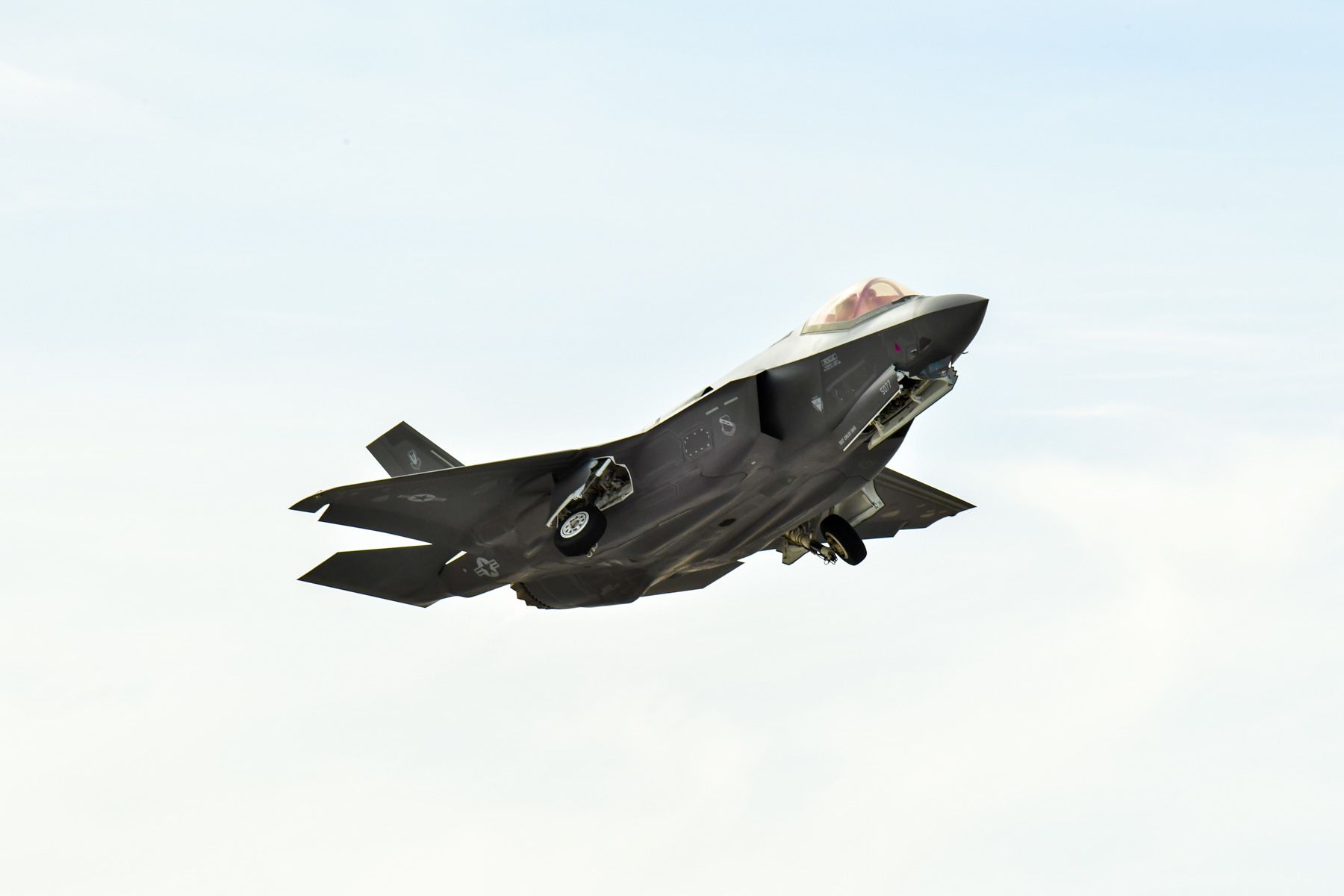Red Flag 17-1 is living up to its reputation as a grueling and rigorous test of fighter pilot skills, according to Hill Air Force Base F-35A pilots participating in the premier air-to-air combat exercise at Nellis Air Force Base, Nev., from Jan. 23 to Feb. 10.
The three-week exercise has friendly ‘Blue Force’ taking on enemy ‘Red Force’ aggressors in both live and mock training environments to test air-to-air, air-to-ground, and space and cyber warfare during both day and nighttime missions.
Each operation begins with a lengthy and intensive preflight planning session where Blue Force pilots meet with cyberspace, special forces, space technology experts, and allied counterparts to shape what they hope to be winning game plans and tactics.
“Most of the work takes place before we get in the air, and it’s in these planning sessions where mission success actually begins,” said Lt. Col. Dave DeAngelis, Reserve F-35A pilot and commander of the 419th Operations Group, detachment 1.
“When we’re flying the actual mission, White Force [the Red Flag planning team] will then change things up to fully test our ability to respond to the unexpected, just like in real combat,” DeAngelis said.
At any given time, Blue Force may have up to 60 aircraft fighting to take on Red Force aggressors that come in waves of 8-16 aircraft at a time. Additional enemy aggressor aircraft are added to the fight each time Blue Force shoots down a Red Force jet. In total, Blue Force may face as many as 50 total enemy aircraft during a mission.
“It’s intense participating in an exercise of this magnitude,” said Maj. Jayson Rickard, a Reserve F-35A pilot with the 466th Fighter Squadron. Rickard was handpicked to serve as the first F-35A mission commander at Red Flag and said the exercise offers exceptional preparation for a future air-to-air “shooting war.”
F-35A pilots have unique challenges given the massive amount of information provided to them via the aircraft’s sophisticated data-gathering capability.
“The F-35A’s sensors and ability to build the battlespace picture is amazing, but with the number of friendly aircraft, enemy aircraft, and surface-to-air threats at this Red Flag, it’s a lot of information to process,” said Maj. James Schmidt, an active-duty F-35A pilot with the 34th Fighter Squadron. “Thankfully, the F-35A’s ability to show us where the friendly assets are, where the enemies are, and know that they can’t see us gives it the lethal advantage to locate threats and targets deep in enemy territory.”
Following each mission, everyone involved participates in an extensive debrief session, which can last six hours or more, to dissect every detail of the mission, reviewing what went right and what went wrong.
“The real learning begins during debrief. The whole goal is to not make the same mistake twice and ensure lessons learned on any failures are corrected for the next mission,” Schmidt said. “This is especially valuable to the F-35A community as we continue to build our tactics and understand how we fit into the bigger picture of fifth- and fourth-generation assets. Then the cycle begins again, starting with solid planning the next day.”
About 2,300 personnel and 129 aircraft, to include allied partners from Britain and Australia, are participating in Red Flag 17-1.










